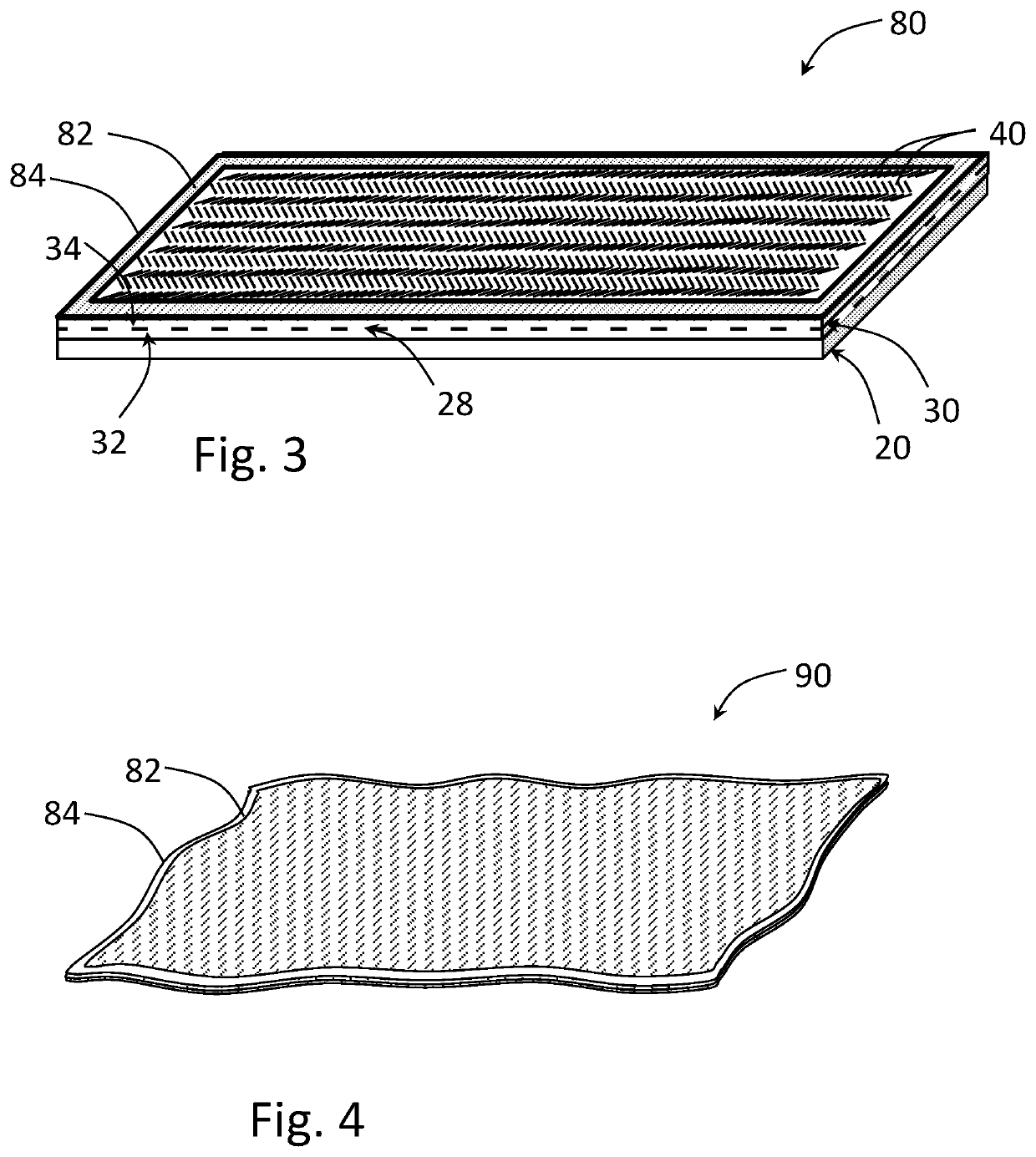Stitchbonded, washable nonwoven towels and method for making
a non-woven towel and stitching technology, applied in the field of stitching, washable non-woven towels and making methods, can solve the problems of product abuse, product integrity is subject to many abuse, and the product performs inadequately in molding or thermoforming operations, etc., to achieve good hand feeling, maintain integrity, and durability
- Summary
- Abstract
- Description
- Claims
- Application Information
AI Technical Summary
Benefits of technology
Problems solved by technology
Method used
Image
Examples
examples
[0116]A. Stitchbonded Fabric Making
[0117]A continuous nonwoven sheet of 100% lyocell fibers (sourced from Norfin (USA) LLC and selected from among a 1.6 oz product reference 02440, or a 2.4 oz product reference 02441) was overlaid onto an inner face of a continuous integrated nonwoven sheet consisting of an outer nonwoven layer of wood pulp fibers and an inner nonwoven layer of polyester fibers that have been heavily entangled with the wood pulp fibers (sourced from Jacob Holm and selected from 2.0 oz product reference 8801, 2.6 oz product reference 8890, and 3.6 oz product reference 8805). The overlapping nonwoven sheets were stitched together into a stitchbonded nonwoven fabric, using a two-bar stitching system comprising a front-bar yarn of polyester textured, bulkable filament yarn (75 den / 36), and back-bar yarn of textured, bulkable nylon filament yarn (70 den / 40). The stitching pattern was selected from among a chain or pillar pattern, a Tricot pattern, or a 3- or 4-Row Atlas ...
PUM
| Property | Measurement | Unit |
|---|---|---|
| time | aaaaa | aaaaa |
| length | aaaaa | aaaaa |
| length | aaaaa | aaaaa |
Abstract
Description
Claims
Application Information
 Login to View More
Login to View More - R&D
- Intellectual Property
- Life Sciences
- Materials
- Tech Scout
- Unparalleled Data Quality
- Higher Quality Content
- 60% Fewer Hallucinations
Browse by: Latest US Patents, China's latest patents, Technical Efficacy Thesaurus, Application Domain, Technology Topic, Popular Technical Reports.
© 2025 PatSnap. All rights reserved.Legal|Privacy policy|Modern Slavery Act Transparency Statement|Sitemap|About US| Contact US: help@patsnap.com


